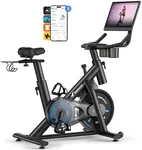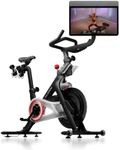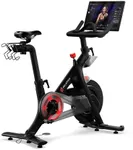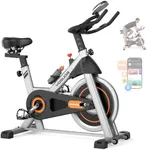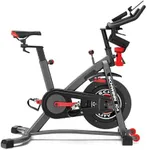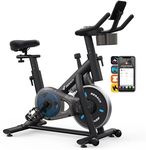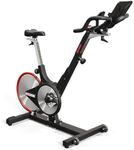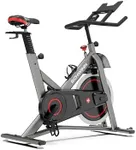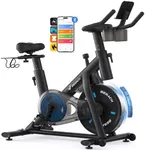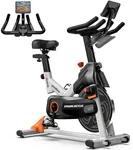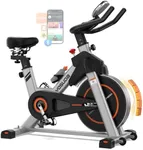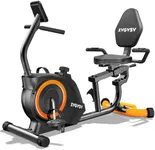Buying Guide for the Best Stationary Bikes
Choosing a stationary bike can be a great step towards staying active, whether your goal is cardio workouts, weight management, or enhancing general fitness at home. When picking the right stationary bike for yourself, it's important to consider how you’ll be using it, the type of exercise you enjoy, the space you have available, and the level of comfort or challenge you need. A well-chosen bike not only encourages regular use but also matches your fitness goals and lifestyle, making your investment worthwhile.Type of ResistanceResistance is what creates the effort you feel when pedaling. There are different types, including magnetic, friction, and air resistance. Magnetic resistance bikes are typically quieter and require less maintenance, making them suitable for home use, while friction resistance tends to be less expensive but can be noisier and wear out faster. Air resistance bikes adjust automatically to how hard you pedal, which can be excellent for interval training. If you want a quieter and low-maintenance ride, magnetic might be best. For high-intensity workouts, air resistance could suit you. Consider your tolerance for noise and preferred workout style when deciding.
Bike Style (Upright, Recumbent, Spin)The style of the stationary bike shapes your riding experience. Upright bikes mimic the position of regular bicycles, making them good for standard fitness routines and smaller spaces. Recumbent bikes offer a laid-back seating position with back support, which is more comfortable for people with joint or back issues. Spin bikes are built for intense workouts and more closely resemble road cycling, suited for those seeking high-energy training. Choose the style that matches your comfort needs, workout intensity preferences, and any physical limitations you may have.
AdjustabilityAdjustability refers to how much you can change the seat, handlebars, and sometimes the pedals to match your body. Bikes that allow more adjustments can create a more comfortable and efficient riding posture, fitting a wide range of users. If more than one person will use the bike, or if you want the best ergonomics, prioritize models with plenty of adjustment options. For individuals with special height or size requirements, this feature is especially important.
Console and Display FeaturesThe console or display tracks workout metrics such as time, distance, speed, calories burned, heart rate, and sometimes offers preset workout programs. Some consoles are basic, while others can sync with apps or provide immersive courses. If you enjoy monitoring progress or need motivation, look for a model with a clear, user-friendly display and the features that match your tracking habits. If you prefer simplicity, a basic display may be less distracting.
Weight Capacity and StabilityWeight capacity refers to the maximum user weight a bike can safely support, while stability is about how solid the bike feels during use. Bikes with higher weight capacities and solid frames are usually more stable and durable, suiting users of all sizes. If you plan vigorous workouts or are heavier, look for higher weight limits and sturdy builds. Stability is key for both safety and comfort no matter your fitness level.
Footprint (Size)The footprint is the amount of space the bike takes up, both when in use and when stored. Compact bikes are easier to fit into smaller homes but may sacrifice some stability or adjustability. Measure your available space to ensure the bike will fit comfortably, leaving enough room for safe use and easy access. Foldable designs are helpful if you need to store the bike away between uses.
Seat ComfortComfort is crucial for consistent use. Seats come in various shapes and padding levels, with recumbent bikes typically offering the most comfort for extended sessions. If comfort is a concern, look for wider, well-padded seats or options that allow for seat upgrades. If possible, test out or read reviews to gauge comfort, especially if you plan to use the bike daily or for long workouts.
